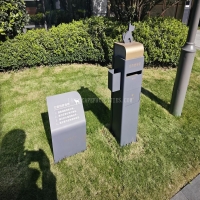Welcome to the website for landscape facilities products and knowledge.
How does the bin’s design ensure it remains easy to use for people with visual impairments?
For individuals with visual impairments, everyday tasks like disposing of waste can pose challenges. However, modern bin designs prioritize accessibility through thoughtful features that enhance usability.
1. Tactile Markings: Many accessible bins include raised symbols or Braille labels to help users identify recycling, compost, and trash compartments by touch. These markings are strategically placed near the opening or on the lid for easy discovery.
2. High-Contrast Colors: Bins designed for inclusivity often use bold, contrasting colors (e.g., black lids on bright yellow bodies) to help those with partial vision distinguish between sections.
3. Ergonomic Openings: Wide, hands-free openings with tactile guides (like notches or ridges) allow users to locate the disposal point effortlessly. Motion-sensor lids are also becoming popular for touchless operation.
4. Auditory Feedback: Some advanced bins emit a sound when waste is deposited, confirming successful use—a helpful feature for those relying on auditory cues.
5. Stable Base & Clear Shape: A weighted or non-slip base prevents tipping, while a simple, recognizable shape (e.g., cylindrical or rectangular) aids in mental mapping.
By integrating these elements, designers ensure bins are not just functional but truly inclusive, empowering people with visual impairments to participate independently in waste management.
Related search:

Recommendation
Outdoor cat and dog feces trash can; Community pet trash can; Metal multi-color design